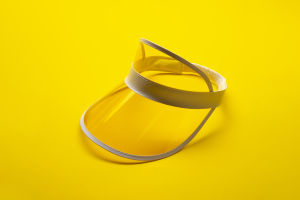The Magic of Magnification
A magnifying glass is a common optical instrument used to enlarge the details of an object, making it appear larger and more distinct.
This simple yet effective tool is used in various fields, including scientific research, daily life, and industrial production.
The Basic Principle of Magnifying Glasses
At the heart of a magnifying glass is a lens, whose primary role is to magnify objects by bending light. A lens is typically made of glass or plastic and features curved surfaces that can be either concave or convex.
Magnifying glasses generally utilize convex lenses, which are thicker at the center and thinner at the edges. When light passes through such a lens, it is refracted in a manner that creates an enlarged virtual image.
When viewing an object through a magnifying glass, the image we see is a virtual image formed behind the lens. The curvature of the lens causes incoming light to bend, thus magnifying the details of the object. This optical effect allows us to discern finer features that might be missed by the eye.
Types of Magnifying Glasses
1. Single-Lens Magnifying Glass: The simplest form of magnifying glass, this type consists of just one convex lens. Single-lens magnifiers are commonly used for viewing small text or objects. Their simple design makes them easy to manufacture and use, contributing to their widespread use in daily life.
2. Dual-Lens Magnifier: This magnifier incorporates two lenses, typically with one lens magnifying the image further. The dual-lens configuration can provide higher magnification and clearer images compared to single-lens magnifiers. Such magnifiers are often employed in professional observations and research, including the design of microscopes.
3. Folding Magnifier: Designed for portability, this type of magnifier features a foldable structure, making it convenient to carry. Folding magnifiers are ideal for outdoor activities like hiking or field surveys, allowing users to view details whenever needed.
4. Illuminated Magnifier: To enhance visibility in low-light conditions, some magnifiers come equipped with built-in LED lights. These additional light sources enable clear observation of details even in dim environments.
5. Electronic Magnifier: Combining electronic display technology with a camera and screen, electronic magnifiers offer higher magnification and display capabilities. They are particularly useful for individuals with visual impairments, providing enhanced flexibility and convenience.
Application Fields of Magnifiers
1. Scientific Research: Magnifiers are indispensable in scientific research for observing fine biological samples, chemical reactions, and physical phenomena. Biologists, chemists, and physicists rely on magnifiers to acquire more precise data and insights.
2. Industrial Inspection: In the realm of industrial production, magnifiers play a crucial role in inspecting product details such as solder joints on circuit boards and surface defects on mechanical components.
They assist engineers and technicians in detecting and resolving potential issues, thereby enhancing product quality and reliability.
3. Restoration and Identification: Collectors and restoration experts frequently use magnifiers to scrutinize antiques, artworks, and artifacts. This examination aids in verifying authenticity, assessing condition, and performing restoration work.
4. Daily Life: In everyday activities, magnifiers are often employed for tasks like reading the fine print, checking medication instructions, and sewing. They help individuals overcome visual challenges and improve their overall quality of life.
5. Education: Magnifiers are also widely utilized in educational settings. Teachers use them to help students better observe natural details, thereby fostering greater interest and enthusiasm for learning and exploration.
As a straightforward yet highly effective optical tool, magnifiers hold significant value across numerous domains. By grasping their operational principles, types, and diverse applications, we can leverage magnifiers to address practical issues and fulfill various needs.
Whether in scientific research, industrial inspection, or daily life, magnifying glasses offer practical solutions that enable us to observe and comprehend the finer details of the world with greater clarity.


